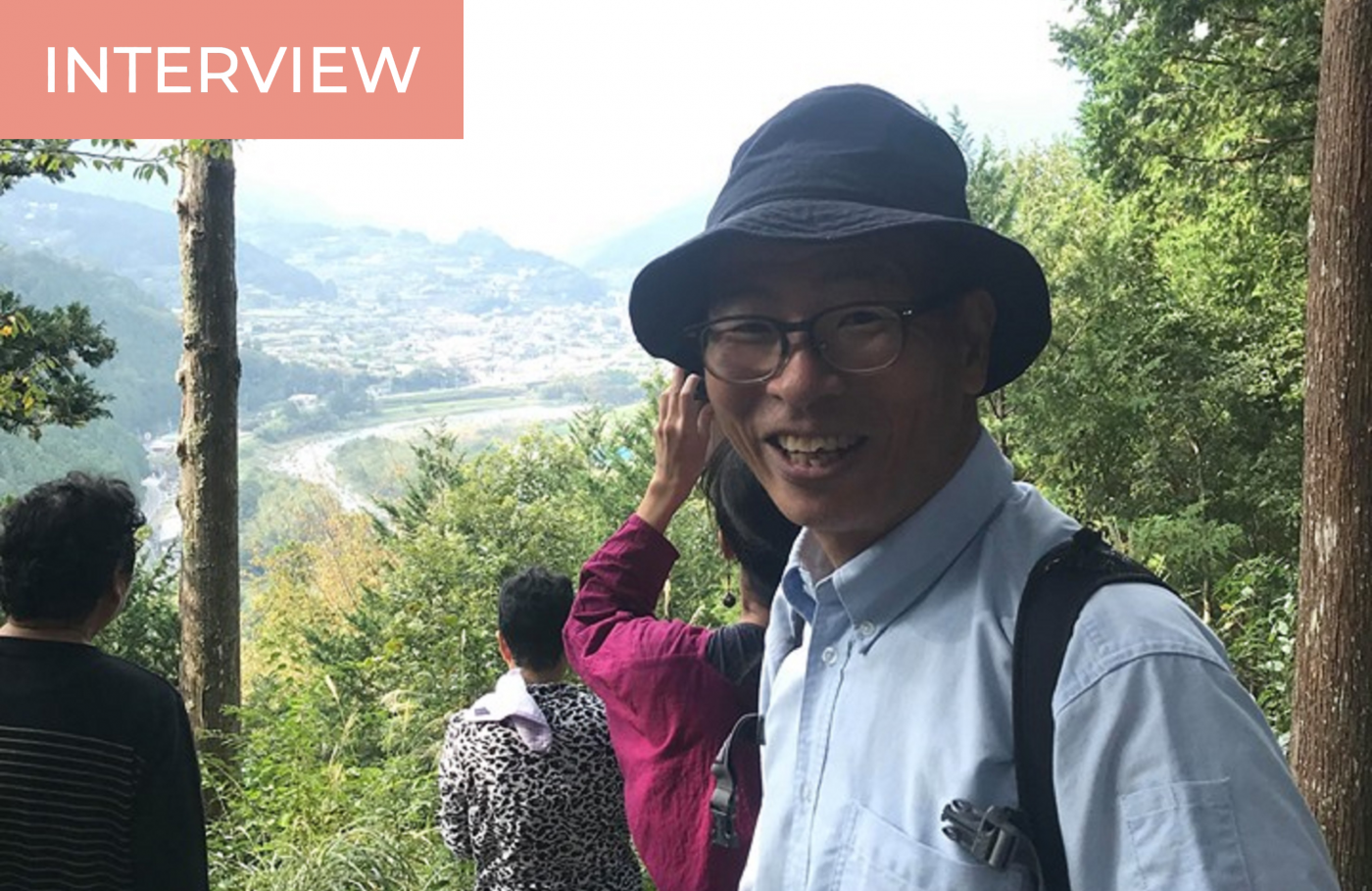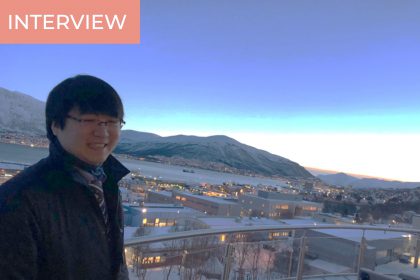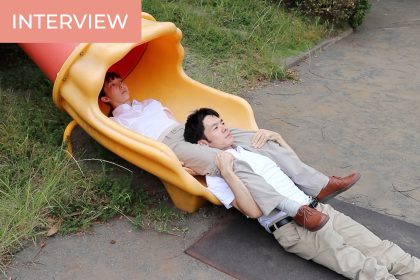I met Ryuji Nakayama for the first time in 2019. At the time, he was working on how to attract foreign visitors to his village of Kamiyama and what content to show them. I was helping in the project, which has led me to spend a few days on the field, with Mr. Nakayama as my guide. It was quite an experience to walk or cycle around the place with him, as we had to stop very frequently to greet almost everyone we were passing by! It was like he knew everybody in the village after 10 years of living there. As a matter of fact, connecting people together and getting to know them is a central aspect of his job: revitalizing Kamiyama and making it more attractive to possible newcomers. In this interview, he tells us how he moved there and what his future revitalization projects are.
Could you explain to us what your job consists of?
Two years ago, I became the chairman of the NPO Green Valley Inc. in the small village of Kamiyama (Tokushima Prefecture). Thankfully, the secretariat is well organized, and I don’t have much paperwork to do. I mainly concentrate on getting new ideas and connecting people.
Green Valley builds up projects and events to give life to the village and attract visitors and new residents. One of our major projects is the Kamiyama Artist in Residence that started about 20 years ago. Each year, three artists from all over the world come to stay in the village and create art in collaboration with the villagers. Last year, I worked on how we could attract a small number of foreign visitors to make them discover the local culture and the Japanese countryside.
Kamiyama is a beautiful place with stunning scenery, culture, and traditions that have been kept for many generations. At the same time, it is also famous for attracting young people with its satellite offices, and the opening of a technical college is in the works. However, it’s hard to make new people come all the way here to discover all this richness. So now I’m thinking of a way to connect people who may have an interest in Kamiyama with the village’s different aspects.
You’ve not always lived in Kamiyama. What has made you want to move there and join Green Valley?
I’ve worked as a salaryman [office worker] for 21 years. Still, in the salaryman world, I couldn’t find a model of what I wanted to become in the future.
With time, I ended up resenting the usual lifestyle in the big city, which consists of working a lot, earning a lot, and spending a lot of money. I wanted to make my own food, repair my house, and develop other skills. I wanted to adopt a more self-sufficient lifestyle. When I looked for a new place to live, I discovered that in Kamiyama, there were lots of people experienced in these fields and who can basically do everything by themselves.
When I moved here, I realized how everything here is lovely and how the village is full of hidden treasures. However, the town is facing severe problems such as depopulation, aging population, and the lack of bearers. I was afraid that such a nice place was about to disappear, and that’s why I decided to join Green Valley. Since I wasn’t born here, I have a new point of view on things that allow me to find some qualities of Kamiyama that the villagers don’t notice anymore. Even after 10 years of living here.
For a depiction of Kamiyama’s many treasures, I invite you to read Anthony’s article:
Three Days in Kamiyama, Tokushima: A Rural Revitalization Success Story
What do you commit to in your activity at Green Valley?
These beautiful things that exist in Kamiyama today, I’d like to preserve as many of them as possible for the future generations.
I’m also trying to provoke a kind of “chemical change” in Kamiyama by creating opportunities for the newcomers and the villagers who are born here to come together.
What are your objectives for the future?
I’d like to make Kamiyama a place people from outside the village and people from outside the prefecture could think of as “my favorite countryside,” a place they’d like to come to again and again. In the future, I’d also like to get support from people who’d like to live here, or who’d like to have deeper bonds with Kamiyama. Together we could make the place even better.
In Japan, when you’re a university student, you study, and there are also all kinds of sports clubs and cultural circles you can join. I’d like Kamiyama to be similar to this in a way, a place where people can study and have fun under many different forms.
In the near future, I’d also like to build a kind of “Kamiyama Cultural Festival” to attract attention. [In Japan, schools and sometimes companies hold “Cultural Festivals” every year to introduce their activities and atmosphere to the public.]
Every year in April, we hold a fusuma karakuri show on an ancient traditional stage that’s being carefully conserved. [Fusuma karakuri is a painted panels traditional show – more information on this lost art here.] But because of the pandemic, the event has been canceled this year. So I’d like to move it to October and use the stage to make regular shows during that month. The shows would include fusuma karakuri but also traditional puppet shows, which is also part of the local culture. October would be ideal for the festival. Villagers get some time off after being busy with the sudachi [citrus fruit] harvest, and the local shrine’s festival also takes place during this period.
Is there anything in the traditional Japanese culture that you admire?
The old habit of sharing things. It’s very alive in the Japanese countryside. For example, right now, summer vegetables such as eggplants, tomatoes, and cucumbers are going from people to people as if they were some kind of local currency. [laughs]
I’d like to share more things that are available in abundance here, but that don’t disappear when you share them. I’m talking about the beautiful scenery and nature, knowledge, and experience. I have come to realize that it’s when I share fun activities and fun time with other people that I feel truly rich.
For some people, their vocation is something definite, a revelation that comes at once. For some others like Mr. Nakayama, it can be a step-by-step experience. The start of his adventure was the discomfort he felt about the material-wealth-based lifestyle most city dwellers are actively pursuing. At first, he was just hoping to become self-sufficient in moving to Kamiyama. However, being a newcomer allowed him to discover hidden treasures. And growing fond of his new home gave him a new objective: protecting the village’s cultural resources and bringing people together. Instead of accumulating material wealth, he discovered the joys of immaterial wealth: knowledge, traditions, skills, the beauty of nature, and human relationships. And for me, the most remarkable aspect of this story is that instead of cherishing this wealth by keeping it for himself, his objective is to share it with as many people as possible. Which, in turn, may allow the village to become wealthier and healthier, and make him even happier.
Green Valley Inc. Official Website




